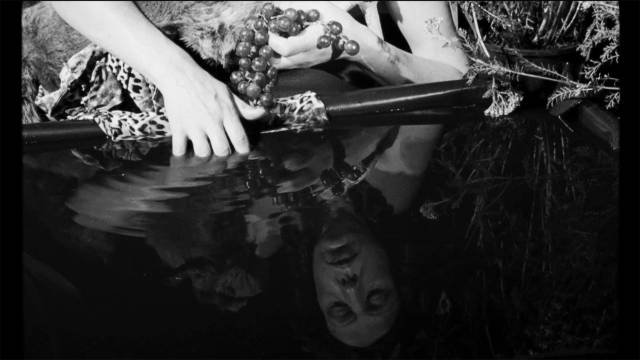Project narrative
Confessions to the Mirror (2016) continues the intermedial method employed in Magic Mirror (2013) but takes it a step further. Cahun authored the two literary texts which form the respective basis for each film: Aveux non avenus (1930) for Magic Mirror and Confidences au Miroir (1945 –1954, published posthumously) for Confessions. The two films focus on different periods in Cahun and Moore’s life: Magic Mirror deals with their life prior to moving to Jersey in 1937, Confessions to the Mirror deals with their life, art and politics on Jersey.
However, the methodology employed in Confessions to the Mirror departs from Magic Mirror in a number of ways. The second film draws attention to the film-maker’s presence and the activity of tracing, copying through reperforming and rematerialising what is interpreted from the photographs. Confessions to the Mirror emphasises the collaborative element of both the photographs and the pair’s anti-Nazi propaganda, particularly in its selection from Cahun’s writing. The film also advances the transposition of the tableaux vivants from recalled still photographs into distilled moving images alongside Cahun’s voicedover text, by introducing colour, sometimes in combination with black and white.
The film-making process in Confessions is made apparent in the framing of the domestic space where filming takes place. For example, in the point-of-view angle of a drawing by Moore in prison, the image frames the hand of a surrogate Moore drawing her bed in the prison. This image “pretends” an imaginative reconstruction of Moore in her cell and, at the same time, shows that, in fact, the surrogate performer is also the film-maker tracing the drawing.
Because the tableaux vivants run together the restaging of photographs with illustrations of Cahun’s writing, the film is able to connect directly the staging of Cahun’s writing and the pair’s distribution of their propaganda with restagings of their sometimes esoteric artworks. This presents the non-hierarchical relationship between their artwork and their political work and life.
My methodology in the film seeks to emphasise the indeterminate nature of art and life that Cahun and Moore sought. An important element in the methodology is restricting myself only to tableaux that either restage Cahun’s photographs or visualise her text. I intentionally avoided other shots that might seek to assist “continuity” or “help the narrative”.




